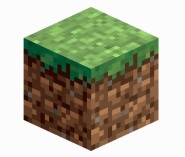Microsoft recently bought Mojang AB, the Swedish company that makes Minecraft, for a reported $2.5 billion. It was not Microsoft’s first attempt to woo Mojang, and many thought they would never be able to close the deal.
In 2009, Markus Persson (‘Notch’), an unknown independent Swedish game developer, released the first version of his creation, Minecraft. It was not a normal ‘game’. It had no defined sequence, no milestones or levels of achievement, and most curiously, no end goal. What it did have was a charming, simplistic world in which a player could ‘mine’ and ‘craft’ for hours (or days) (or weeks) according to their own desires. In fact, the game could be played without any other mobile agents (‘mobs’) at all, leaving an entire world to explore and terraform with no limits. In 2010, maps became truly infinite, growing automatically as the player’s avatar (‘Steve’) approached an edge. The fact that no one else ever has or ever will live in, or even see, your privately created world gives one a compelling, almost haunting feeling.
It reminds me of the 1967 Star Trek episode “Arena”. Captain Kirk is locked in mortal combat with a frightening alien creature on a deserted and barren world. He must find or craft weapons from whatever materials he can find. He finally succeeds by assembling the raw materials for a crude cannon. We have all imagined ourselves cast back to a more primitive environment, where our own imagination and gumption are nearly all we have at our disposal. Interestingly, the goal of many advanced Minecraft players is to populate their world with coffee shops, restaurants, and villages.
Over time, Minecraft has expanded to include many characters, tools, and landscape features, but it has always maintained its minimalist look and feel. That’s the secret to its success – this is a world that is understandable to everyone, from children right through to seniors who grew up before the computer age. While the richness and physics of this world have evolved, the quaint, blocky look of it hasn’t.
The game has since sold many millions of copies, inspired LEGO sets, books, films, and has a huge and active fan base on YouTube. Conventions are held regularly, and Notch achieved rock star status years ago. Minecraft is the very definition of viral Internet success, massively disrupting traditional corporate and marketing models. Without shrink wrap or advertisements, it took over the gaming world.

So, many folks were left scratching their heads over this Microsoft acquisition. On the surface (pardon the pun), it seems like an unlikely fit. However, I don’t think that at all. I see it as the happy marriage announcement of two dear old friends.
Around the turn of the millennium, I was a corporate trainer, with MCT & MCSD certifications (the ‘M’ is for Microsoft). I often found myself sticking up for Microsoft amidst the disdain of my colleagues. I would use Bill Gates’ early years as an example of out-of-the-box thinking, like the Tandy Model 100, the first true notebook, and the last machine that he programmed personally. The best Christmas present I ever got was DOS 3.0, and QuickBASIC was one of the best languages I ever used (and I’ve used 50 or more). Maybe Apple and others were more stylish, but it was Microsoft that really put the excitement into personal computing.
Microsoft hopes to gain leverage in the mobile and youth markets. I cannot think of any better vehicle than Minecraft. Far from seeing it as the death knell for Minecraft, I see Microsoft’s acquisition as a renaissance and a real chance for positive, imaginative, and compelling games to get the much larger piece of the pie that they deserve.
“If you talk about STEM education, the best way to introduce anyone to STEM or get their curiosity going on, it’s Minecraft”
– Microsoft CEO Satya Nadella
Also, there’s Microsoft’s augmented reality headset – HoloLens. There appears to be a plan coming together:
Minecraft + HoloLens + ElementaryProgrammingSkills = Syntonic Learning
If this is what Microsoft has in mind, it could be the most disruptive technology yet. Well done Redmond, and best wishes to Notch in all his future endeavors.
